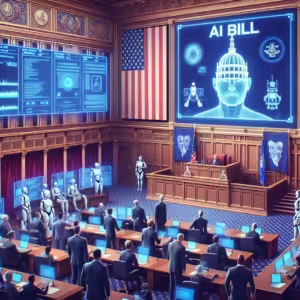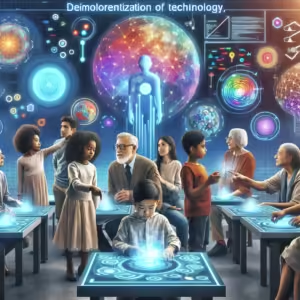The Revolution of AI in Education
Artificial intelligence (AI) is no longer just the subject of futuristic sci-fi movies; it has become an integral part of daily life, rapidly transforming various aspects of our world, including education. Schools across America are increasingly adopting AI technologies to revamp traditional learning environments, ultimately enhancing both teaching and learning experiences.
The Role of Artificial Intelligence in Education
AI in education is not about replacing teachers. Instead, it’s a tool designed to empower educators and learners alike. Here’s how AI is making an impact:
- Personalized Learning: AI algorithms analyze student data to offer tailored learning experiences. By understanding each student’s strengths and weaknesses, AI can create custom learning plans that cater directly to individual needs.
- Automated Administrative Tasks: For teachers, grading and administrative duties can be time-consuming. AI can automate these tasks, allowing educators to focus more on teaching and less on paperwork.
- Virtual Tutoring: AI-powered virtual tutors provide students with instant assistance and feedback, enabling them to learn at their own pace, often beyond traditional classroom hours.
- Data-Driven Insights: Schools can harness AI to collect and analyze data to identify trends in student performance and engagement, facilitating more informed decision-making.
- Inclusive Education: AI tools can bridge gaps for students with disabilities by providing accessible learning materials and adaptive technologies that cater to diverse needs.
Implementing AI in the Classroom
To integrate AI effectively, schools need to adopt a strategic approach that aligns with their educational goals. Implementation involves multiple steps:
Teacher Training and Support
Teachers are at the forefront of this digital transformation. Providing them with proper training and ongoing support is crucial for successful AI integration. Workshops and professional development sessions can equip educators with the skills and confidence needed to use AI technologies effectively.
Infrastructure and Resources
For AI to succeed in classrooms, robust technological infrastructure is necessary. Schools need reliable internet connections, devices, and software to support AI applications. Investment in these resources is vital for a seamless transition to AI-driven education.
Curriculum Alignment
AI integration should enhance, not disrupt, the existing curriculum. Schools must ensure that AI tools align with educational objectives, enhancing current learning models and fostering critical thinking and creativity among students.
Challenges and Ethical Considerations
Though AI holds great promise for transforming education, there are challenges and ethical issues that need to be addressed:
- Data Privacy: The use of AI in education involves the collection and analysis of student data. Schools must establish strict data privacy protocols to protect sensitive information.
- Equity and Access: Not all schools have equal access to technological resources. Bridging this digital divide is essential to ensure that all students can benefit from AI advancements.
- Teacher and Student Acceptance: There may be resistance to AI from both educators and students who are accustomed to traditional learning models. Addressing these concerns and demonstrating AI’s benefits is key to its acceptance.
- Bias and Fairness: AI systems must be developed carefully to avoid inherent biases. This requires ongoing monitoring and refinement to ensure fairness in educational outcomes.
The Future of AI in American Classrooms
The potential of AI in education is vast, but realizing its full potential requires a commitment to continuous improvement and adaptation. As AI technologies evolve, schools must remain agile, embracing innovations that enhance educational experiences while navigating the challenges they present.
Fostering Innovation and Collaboration
Collaboration between educators, technologists, and policymakers is crucial to developing effective AI-driven educational strategies. By working together, these stakeholders can share insights and best practices, fostering a culture of continuous innovation in schools.
Adapting to Technological Advances
As technology evolves, so too must educational approaches. Staying current with the latest AI developments will enable schools to incorporate cutting-edge tools that enhance learning and prepare students for a tech-centric world.
Conclusion
Artificial intelligence offers exciting opportunities to transform the American classroom, creating more engaging, efficient, and personalized learning experiences. While challenges exist, the concerted efforts of educators, administrators, and policymakers can navigate these complexities, ensuring AI serves the best interests of all students. By embracing AI, schools can equip learners with the knowledge and skills they need to thrive in an increasingly digital world, ultimately shaping the future of education for generations to come.








